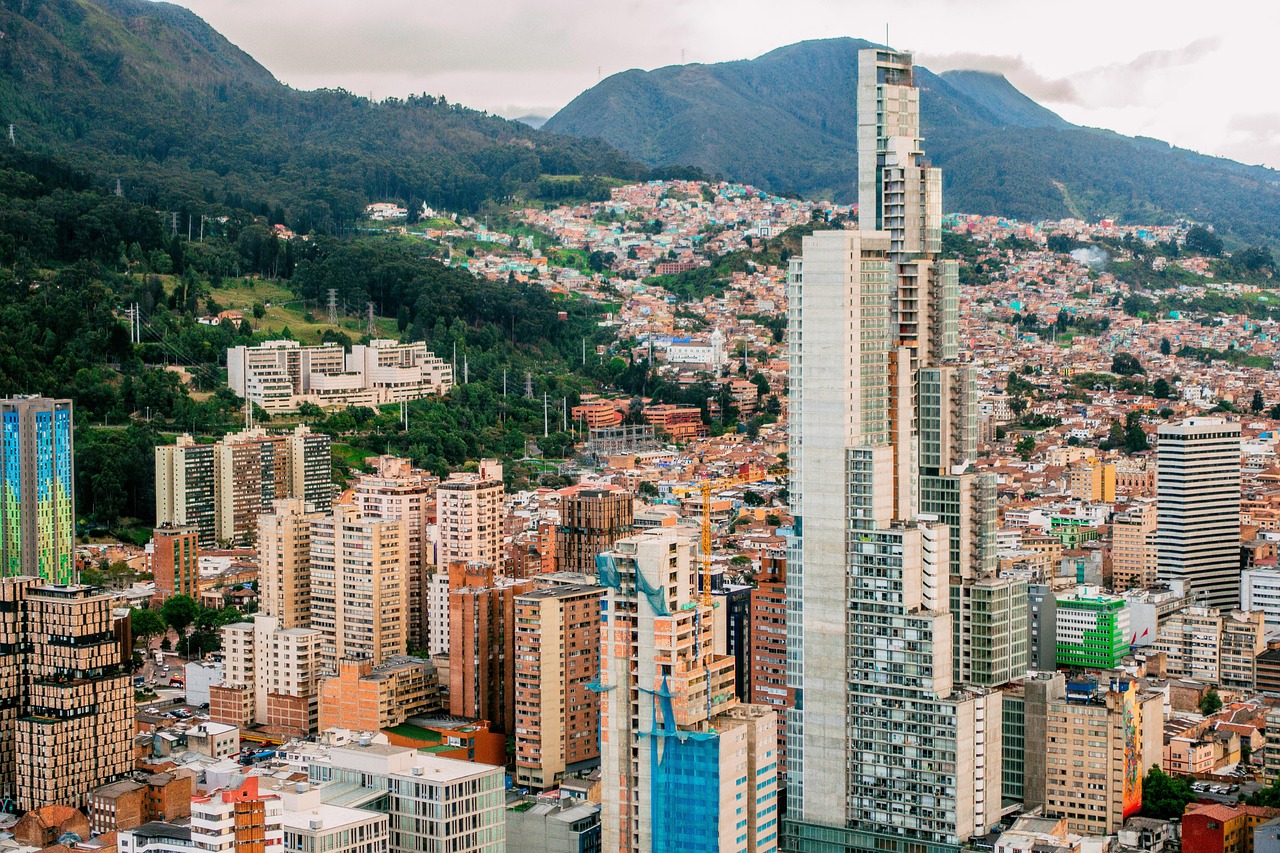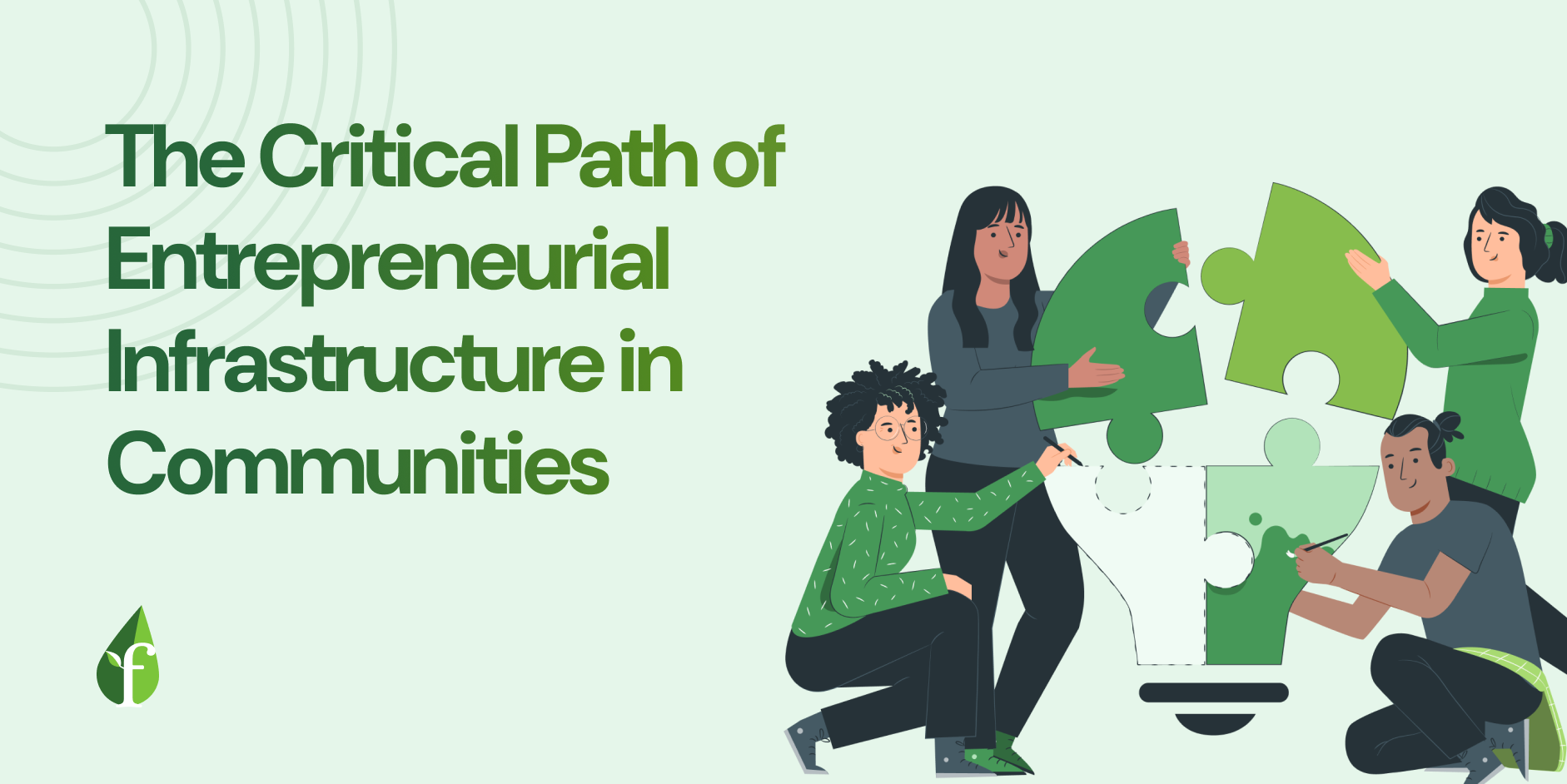
Colombia has always been a country in motion; politically, culturally, and economically. But motion isn’t the same as progress, and progress isn’t guaranteed. For generations, Colombians have adapted to change not because they wanted to, but because they had to. It’s in this crucible of necessity that the country’s entrepreneurial spirit was forged and potential now emerges.
Nowhere is this more visible than in Bogotá, the nation’s capital and economic nerve center. But to understand Bogotá’s role in Colombia’s future as an innovation hub, we should start by contrasting it with its most famous counterpart: Medellín.
Medellín & Bogotá – Two Sides of the Colombian Innovation Coin
In the late 20th century, Medellín was, as most of you know, shorthand for chaos. While featuring this reality might be disconcerting to some, entrepreneurship is forged through challenges and a history and culture that is inspiring both in being admirable and in challenges to overcome. The trafficking trade of the 1980s and 1990s made the city infamous worldwide; violence was not just a risk, it was a daily reality. Yet it was precisely that pressure that set the stage for the transformation of Medellín (and Colombia). After the fall of the cartels, the city’s leaders (both in government and the private sector) made an explicit, long-term bet on urban innovation.
They didn’t start with “tech” in the Silicon Valley sense. They started with infrastructure that connected communities: the Metro, the Metrocable aerial tramways that linked poor hillside neighborhoods to the city center, and public spaces designed to encourage civic participation. Note, aerial tramways are Transportation Tech, they're an investment, and they're a risk taken. These weren’t just urban improvements, they were strategic investments in human mobility, safety, and social trust. That foundation made Medellín a magnet for social entrepreneurs, civic tech innovators, and design-thinking practitioners long before the startup term became fashionable.
Bogotá’s trajectory has been different. As the political capital, it has always been the seat of power, home to national government agencies, corporate headquarters, and the country’s most prestigious universities. It didn’t have to reinvent itself in the same way because it was never as challenged. But that also meant it didn’t develop the same urgency to innovate from the ground up. Where Medellín’s ecosystem emerged from civic reinvention, Bogotá’s has grown out of scale and centralization. And as we're not seeing throughout the world, the role of policy makers and appropriate government oversight and support, is more critical than ever in innovation. The scale possible through Bogota brings resources, talent, and influence but also bureaucracy, fragmentation, and a tendency to replicate efforts instead of coordinate them.
This is why Medellín is often held up as the model for transformation, while Bogotá is viewed as the giant with untapped potential. One was forced to change; the other now has the luxury (and the burden) of leading the way.
Colombian History and Culture as Fuel for Entrepreneurship
In Colombia, culture isn’t just an output of innovation, it is the engine. Innovation doesn’t start with a technology or a business plan; it starts with a way of thinking about possibility, opportunity, and risk. And Colombian culture is steeped in exactly those traits.
Travel to any Colombian town and you’ll find microenterprises woven into the fabric of daily life: a family roasting and selling arepas on the street corner, a seamstress creating bespoke dresses for neighborhood weddings, a farmer experimenting with new coffee varietals to sell to specialty roasters abroad. These aren’t hobbyists; they’re entrepreneurs operating in environments where formal employment may be scarce, credit hard to come by, and regulations unpredictable.
This adaptive entrepreneurialism comes from a national history that demanded resilience. The colonial economy forced resourcefulness; the shifting political winds of the 20th century rewarded adaptability; the global demand for Colombian goods, both legal and illicit, taught hard lessons about market access, logistics, and competition. The coffee growers who built global brands like Juan Valdez weren’t just selling beans, they were building international distribution models decades before “scaling” became a startup buzzword.
It’s this combination of creative problem-solving and relentless hustle that explains why Colombian entrepreneurs are as comfortable bootstrapping a family business as they are pitching a venture-backed fintech. The culture doesn’t romanticize innovation as a sudden spark; it treats it as a skill honed over time, born from necessity, and sharpened by competition.
Bogotá, Where the National Potential Meets Urban Reality
Bogotá is where all of Colombia’s threads converge. The city’s density, diversity, and institutional power make it the natural epicenter of the country’s innovation economy. It is home to the largest concentration of universities, the headquarters of major banks, the offices of multinational corporations, and the diplomatic corps that connects Colombia to the world.
But those same advantages create the paradox that defines Bogotá’s startup scene: with so much institutional heft, the city is over-resourced while under-coordinated. There’s no shortage of Startup Development Organizations, from HubBOG’s early acceleration programs to Rockstart’s sector-focused cohorts, from Seedstars’ global startup competitions to Innpulsa’s government-backed initiatives. Each is doing valuable work, yet as is usually the case throughout the world, operating somewhat in silos, chasing the same pool of founders and investors rather than building a unified pipeline.
The investor landscape mirrors this fragmentation. There are credible local venture players like INQLab and Velum Ventures, but their reach is limited; angel networks are small, and early-stage checks are often too modest to move the needle. As a result, the most promising startups are still turning to Mexico City, Miami, or São Paulo for serious funding; often they don’t come back, and we can change that.
What Bogotá has, then, is not a shortage of activity, but a shortage of connective tissue. A challenge is not to create more programs, but to make the programs talk to each other; and to the investors, corporates, and policymakers who can help them scale.
Industry Strengths Must Focus Beyond “Tech”
It’s easy to lump Bogotá’s economy into “tech,” but that obscures the specificity of its competitive advantages. The city’s fintech sector, for example, isn’t just about mobile apps, it’s about building trust in digital transactions in a country with a large unbanked population. That requires cultural fluency, regulatory savvy, and product design that works for people with inconsistent internet access and fluctuating incomes.
Logistics is another area of strength, shaped by Bogotá’s role as a distribution hub for a country with challenging geography. Companies here are not just optimizing delivery routes; they’re designing systems that can get a package from a warehouse in the Andes to a doorstep in the Amazon basin. The lessons learned in Bogotá’s traffic-choked streets are directly applicable to emerging markets worldwide.
The renewable energy manufacturing sector is growing as Colombia invests in solar and wind capacity, with Bogotá serving as a base for design, engineering, and export. The creative economy is equally potent: Bogotá’s music, fashion, and gaming industries export not just products but cultural capital, building brands that resonate across Latin America and beyond. And in agtech, Bogotá’s proximity to fertile farmland and its global coffee reputation give startups a ready market for innovations in supply chain management, crop monitoring, and sustainable production.
These sectors are not isolated. They intersect in ways that create rich opportunities for cross-pollination: fintech meets agtech in agricultural microfinance; logistics meets renewable energy in electric vehicle fleets; creative economy meets tech in gaming startups that incorporate AI-driven storytelling. The opportunity lies in making these intersections intentional, not accidental.
From Colombian Culture to Venture Capital
Bogotá’s culture already drives entrepreneurship -> entrepreneurship drives innovation. The city has the talent, the industries, and the entrepreneurial instincts to compete globally. What it lacks is a system that consistently turns early-stage ideas into investor-ready companies without losing them to other markets.
That requires a few things:
-
A structured approach to founder education that blends global best practices with local market realities.
-
A coordinated network of mentors, investors, and corporate partners who work from the same playbook.
-
Partnerships that bridge universities, public agencies, and the private sector so that the pipeline from idea to scale is continuous.
This is where global accelerator models that emphasize discipline over hype, milestones over pitch decks, and founder accountability over vanity metrics prove their worth. This is where we come in by way of Founder Institute; programs with a proven track record of producing investor-ready startups can be adapted to Bogotá’s context, embedding themselves in universities, integrating with municipal policy, and partnering with local leaders to anchor a sustainable pipeline.
Done right, such partnerships wouldn’t just fill the capital gap; they’d make Bogotá the kind of place where capital actively seeks opportunity because the culture, the entrepreneurship, and the innovation ecosystem are working in sync.
Coming Up in Bogota: GoFest 2025
The choice is Bogotá’s to make and the opportunity for us to accomplish more, quickly, is right around the corner. The assets are there: a deep talent pool, a vibrant cultural economy, sectoral strengths that go beyond clichés, and a global brand as Latin America’s political and cultural crossroads. What’s needed now is intentional coordination, the kind that builds trust between founders and funders, aligns public and private agendas, and ensures that local successes become national (even continental) benchmarks.
"Since first launching in Bogota in 2011," Founder Institute CEO Jonthan Greechan with me, "we have helped launch over 100 companies as the city has grown into a regional startup hub. I believe the city is just beginning to tap its entrepreneurial potential, and I'm excited to share my thoughts as a keynote for GoFest 2025."
That’s why GoFest 2025 matters. It’s a chance for Bogotá’s leaders, investors, universities, and entrepreneurs to agree on the next stage of the city’s evolution and to commit to the structures and partnerships that will make it real.
The question isn’t whether Bogotá can lead. It’s whether it will choose the discipline and collaboration that turn potential into permanence. Let's get there together.
The Founder Institute is the world’s most proven network to turn ideas into fundable startups, and startups into global businesses. Since 2009, our highly-structured accelerator programs have helped entrepreneurs raised over 1.9BN in funding across over 200 cities worldwide.
Learn more about the Founder Institute at FI.co, join an upcoming startup event at FI.co/events, or subscribe to our Insights Newsletter.



